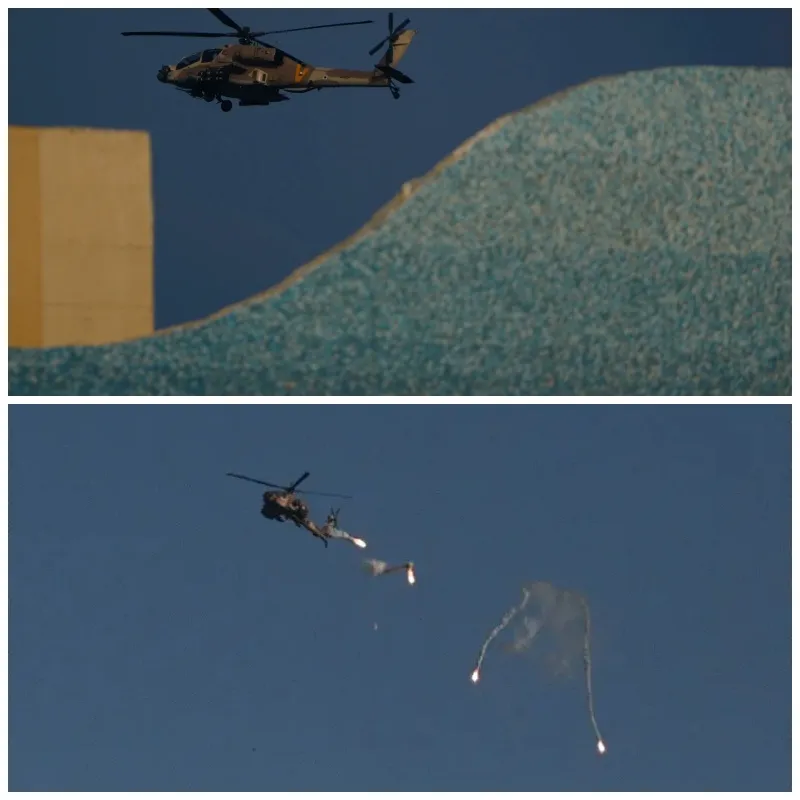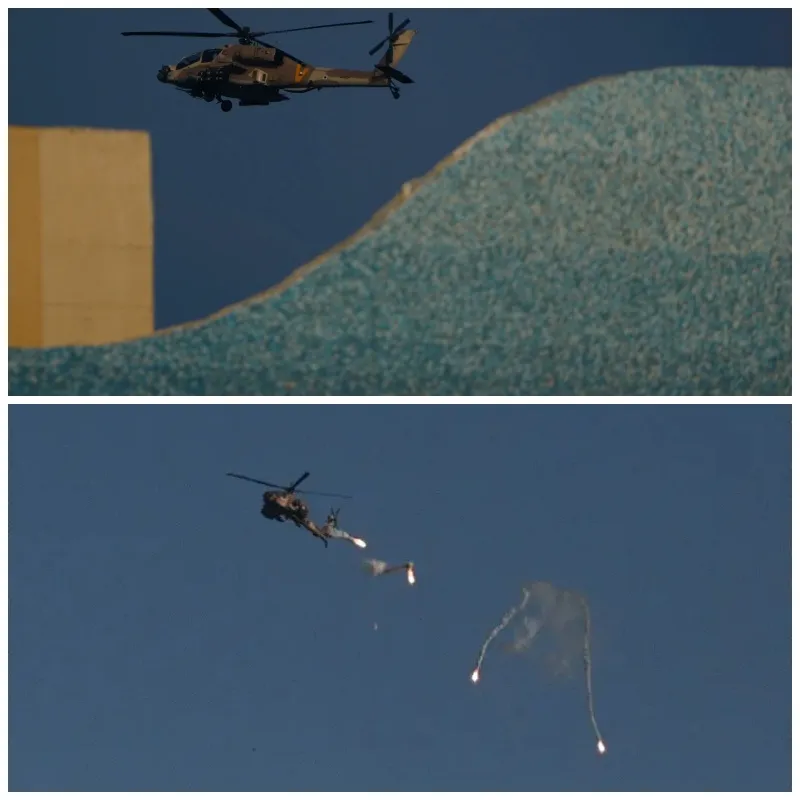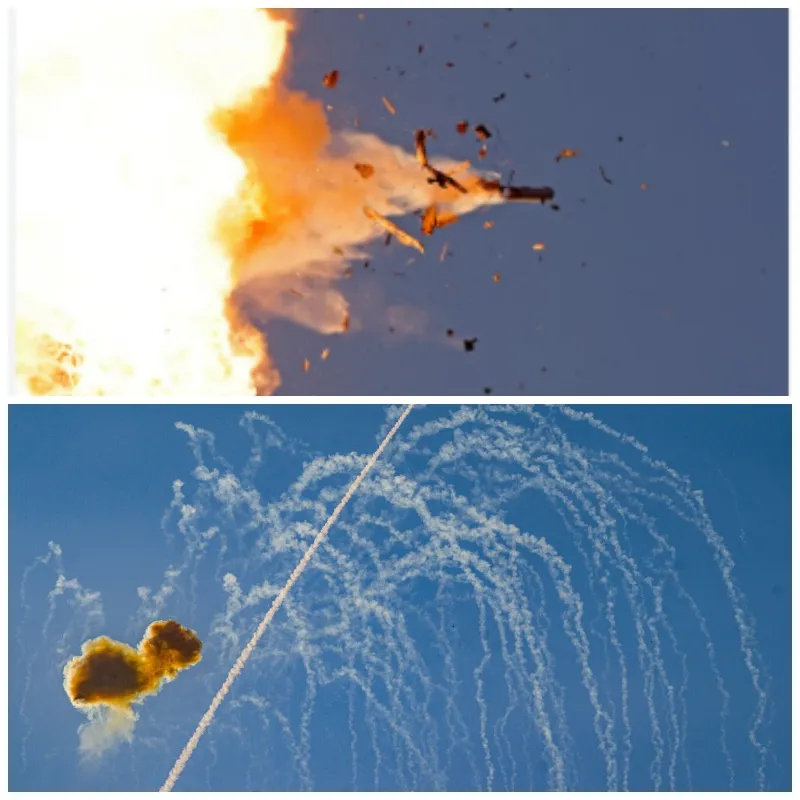

The Initial Strike and Hezbollah’s Retaliation
The Israeli military initiated the airstrikes with the intention of preempting what it claimed was an imminent large-scale attack from Hezbollah. The militant group had reportedly been preparing a heavy barrage of rockets and missiles aimed at northern and central Israel. In response, Hezbollah quickly announced that it had launched an attack on Israeli military positions, describing it as the first stage of its retaliation for the killing of Fouad Shukur, a senior Hezbollah commander, in an Israeli airstrike in Beirut the previous month.
The scale of Hezbollah’s retaliation was significant, involving more than 320 Katyusha rockets and an unspecified number of drones. The group claimed that its attacks targeted multiple strategic locations within Israel, including military sites and the Iron Dome missile defense platforms. Despite Israel’s claims of having thwarted the attack, Hezbollah insisted that all of its drones hit their intended targets, further escalating the tension.
The Potential for Regional Escalation
This latest exchange of fire raises the specter of a wider conflict that could engulf the entire region. The involvement of Hezbollah, which is backed by Iran, could draw in other militant groups and nations into the conflict, potentially leading to a regional war. The situation is further complicated by the ongoing Israel-Hamas conflict in Gaza. Hezbollah has indicated that it might halt its operations if a ceasefire is established in Gaza, but with the situation rapidly deteriorating, the prospects for a peaceful resolution appear slim.
Israeli Prime Minister Benjamin Netanyahu, speaking at a Cabinet meeting, emphasized the gravity of the situation, stating that the military had successfully neutralized “thousands of rockets that were aimed at northern Israel.” He urged Israeli citizens, particularly those in the north, to follow directives from the Home Front Command and to stay close to bomb shelters as a precaution against further attacks. Air raid sirens were reported throughout northern Israel, and Ben-Gurion International Airport was temporarily closed and flights diverted due to the threat of attack.
Hezbollah’s Military Capabilities and the Risk of Escalation
Hezbollah’s military capabilities have grown significantly since its last major conflict with Israel in 2006. The group is believed to possess an arsenal of approximately 150,000 rockets, including advanced precision-guided missiles capable of striking deep into Israeli territory. In addition to its rocket forces, Hezbollah has developed a fleet of drones that can evade Israeli air defenses, posing a serious threat to Israeli military and civilian infrastructure.
Israel, on the other hand, boasts one of the world’s most advanced militaries, supported by a multi-tiered missile defense system designed to intercept and destroy incoming threats. The Israeli Defense Forces (IDF) have been on high alert since the escalation began, with reports indicating that around 100 Israeli aircraft participated in Sunday’s airstrikes. The Israeli government has also moved additional troops to the Lebanese border in anticipation of further clashes with Hezbollah.
Despite its formidable military capabilities, Israel faces significant challenges in countering Hezbollah’s asymmetrical warfare tactics. The group operates from densely populated areas in southern Lebanon, using civilian infrastructure as cover for its military operations. This complicates Israel’s efforts to target Hezbollah’s military assets without causing widespread civilian casualties, a factor that could further inflame regional tensions.

International Response and Diplomatic Efforts
The international community has reacted with alarm to the escalating violence, with the United States and European countries leading diplomatic efforts to prevent the situation from spiraling out of control. U.S. President Joe Biden has been closely monitoring the developments, and the White House has issued statements reiterating America’s support for Israel’s right to defend itself. In a phone call with his Israeli counterpart, Defense Secretary Lloyd Austin reaffirmed the United States’ commitment to Israel’s security and condemned Hezbollah’s actions.
In recent weeks, senior U.S. officials have made a series of visits to Israel and Lebanon in an attempt to de-escalate the situation. However, the ongoing conflict between Israel and Hamas in Gaza has complicated these efforts, with Hezbollah linking its actions to the broader conflict. The U.S. and its allies are now faced with the challenge of addressing multiple, interconnected crises in the region, each with its own set of risks and potential flashpoints.
The Broader Implications for Regional Stability
The stakes in this conflict are high, not only for Israel and Lebanon but for the broader Middle East. A full-scale war between Israel and Hezbollah could have devastating consequences for the region, displacing hundreds of thousands of people and causing widespread destruction. Southern Lebanon, where Hezbollah’s strongholds are located, would likely bear the brunt of Israeli airstrikes, with critical civilian infrastructure targeted in an attempt to cripple the group’s military capabilities.
Hezbollah’s close ties to Iran add another layer of complexity to the conflict. Iran has been a staunch supporter of Hezbollah, providing the group with financial and military assistance. Tehran has also issued warnings of retaliation against Israel for the killing of senior Hamas leaders, further raising the prospect of a broader conflict that could involve multiple countries across the Middle East.
The Risk of a Prolonged Conflict
As the conflict enters a new phase, there are growing concerns that it could become a protracted war with no clear end in sight. Both Israel and Hezbollah have signaled their readiness for a sustained military campaign, with each side determined to achieve its strategic objectives. For Israel, this means neutralizing Hezbollah’s military capabilities and securing its northern border. For Hezbollah, it is about demonstrating its strength and resilience in the face of Israeli aggression, while also maintaining its position as a key player in the regional power dynamics.
The longer the conflict continues, the greater the risk of it spiraling into a wider war that could draw in other countries and militant groups. The involvement of Iran, Syria, and other regional actors could transform the conflict from a bilateral confrontation into a multi-front war with devastating consequences for the entire region.
A Region on the Brink
The ongoing conflict between Israel and Hezbollah represents a significant flashpoint in the Middle East, with the potential to trigger a wider regional war. The heavy exchange of fire, the involvement of advanced military technologies, and the complex web of alliances and rivalries make this a highly volatile situation with far-reaching implications. As the world watches closely, the key question remains whether diplomatic efforts can prevent the conflict from escalating further or whether the Middle East is on the brink of another devastating war.






